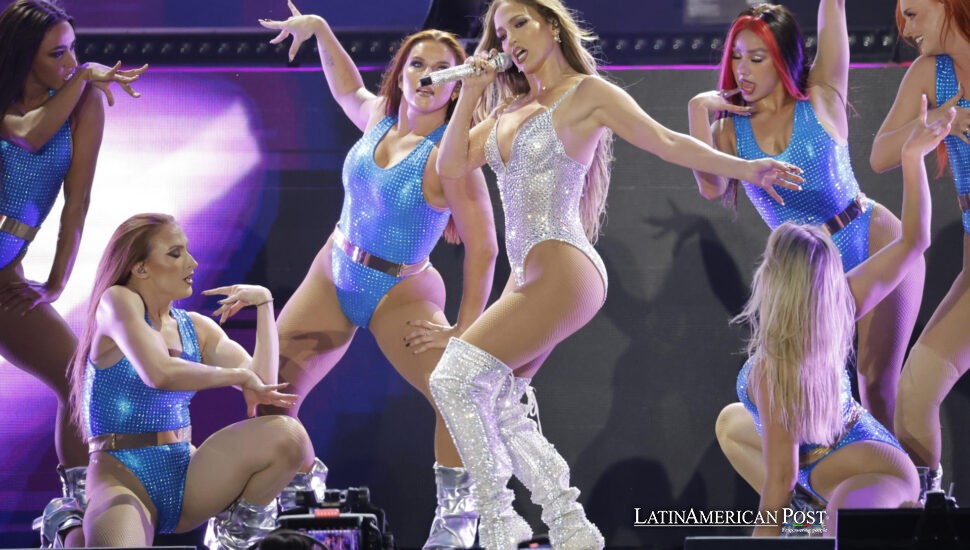Latin Pop Gold Rush: How Streaming Turned a Niche Sound into the World’s Loudest Beat

Streaming shattered the language wall, thrusting Latin performers from side-stage curiosities to global headliners whose tours out-gross rock legends. Yet beneath the glitter lies a race to avoid algorithmic sameness and political headwinds that could still clip the genre’s soaring wings.
From Fringe to Headliner: The Algorithm Strikes a Beat
Jennifer Lopez remembers the day a major-label executive told her Spanish lyrics were “merchandise best left in Miami clubs.” Three decades later, she quotes that line only to laugh. A 2023 IFPI report reveals that Latin tracks account for more than a quarter of Spotify’s weekly listeners worldwide, second only to Anglo-American pop. Additionally, YouTube views for Bad Bunny alone eclipse 31 billion.
Algorithms, once gatekeepers’ worst nightmare, have become the megaphone for Spanish-language music, amplifying reggaetón, bachata, and urbano into headphones from Lagos to Lisbon. Ethnomusicologist Deborah Pacini Hernández notes that salsa, reggaetón, and Latin trap incubated for years in neighborhood clubs.
Still, TikTok and YouTube “flattened geography,” letting bilingual teens in Seoul or Berlin hit play next to Beyoncé as if boundaries never existed. The financial tailwind is just as strong: the U.S. Latin market hit $1.4 billion in 2023, triple its 2016 size, while Bad Bunny’s 2022 tour grossed an eye-popping $435 million—numbers that force labels to treat Spanish verses not as curiosities but as balance-sheet necessities.
JLo’s Era of Freedom—and a New Latina Narrative
Lopez’s “Up All Night” tour, launched in Pontevedra, doubles as a memoir and a manifesto. At 55, she dances through 30 years of hits, sliding new songs between classics to underscore a thesis she repeated backstage: “This is my summer of self-ownership.” Her single “Free” thunders over stomping drums and throws romance to the curb, celebrating sovereignty instead. Scholars say her pivot mirrors a broader revolution among Latina superstars.
Petra Rivera-Rideau, author of Remixing Reggaetón, views Karol G shredding a guitar in Joan Jett-inspired red hair and Shakira’s Super Bowl solo as watershed moments that swapped the tired exotic-muse trope for full-blown rock iconography. Lopez’s performance seals that shift: halfway through the show, she rips Queen’s “We Will Rock You” into her Bronx anthem “Jenny from the Block,” whipping the crowd into bilingual call-and-response. When the last kick-drum echoes, she bows—not coyly, but with arms aloft, as if to say the four decades she spent pushing open doors have finally widened into an amphitheater.

EFE
Metrics, Markets, and the Language-Adjacency Windfall
If Lopez supplies the star power, data supplies the proof. A 2024 Harvard Growth Lab paper calculated that Latin acts sold 18 percent of all concert tickets worldwide last year, a leap from 4 percent in 2015. Economists credit three drivers.
First, diaspora dollars: second-generation Latinos in the U.S. and Europe wield bigger entertainment budgets than ever. Second, affordable mobile data: 4G (and now 5G) packages make non-stop streaming accessible across Latin America, Africa, and South Asia. Third, what scholars call “linguistic adjacency”: Spanish and Portuguese lyrics resonate in Romance-language markets even as they feel exotically fresh. Lopez’s Pontevedra set showed this adjacency in action: she toggled between English hooks and Spanish verses with the ease of a DJ cross-fader, and the crowd never missed a syllable.
Streaming also equalizes indie hopefuls with stadium titans—at least initially. Puerto Rican bedroom producer Young Miko climbed to 10 million monthly listeners within a year on Spotify, while Mexico’s corridos tumbados star Peso Pluma hit Coachella before debuting an album. Streaming platform playlists such as “¡Viva Latino!” and “Baila Reggaetón” rocket unknown tracks to millions overnight, generating what data analysts call a “velocity loop”: streams drive TikTok dances, TikTok drives more streams, and labels rush to sign whichever hook claims the most alt-text captions.
Growing Pains: Algorithms, Visas, and the Next Frontier
Yet not all that glitters under neon stage lights is gold. Alejandro L. Madrid, a musicologist at Cornell, warns that the same algorithms fueling Latin pop can flatten it. The dembow beat, reggaetón’s backbone, risks becoming so ubiquitous that emerging acts feel pressured to copy and paste its rhythm rather than risk innovation.
Lopez conceded the point mid-interview: “There’s room for indigenous languages, for corridos, for Afro-Peruvian festejo beats. We can’t let the playlist box us in.”
Politics also intrude. Touring visas are becoming increasingly difficult to obtain under tightening immigration policies in the United States and recession-averse Europe. In Barcelona, neighborhood councils have cited crowd control and “cultural noise” as reasons for curbing Latin urban parties. For artists in Mexico or Colombia, a single embassy appointment gone awry can derail an entire tour cycle. Nevertheless, the trend lines tilt upward. Telecom giants are rolling out faster networks across Latin America and Africa, two regions where youth already stream Latin Urbano more than local pop. Analysts predict the genre’s share of global streams could surpass 30 percent within five years.
Lopez, adjusting her headset mic while stagehands test pyro cues, distills the stakes: “I used to be one Latina slot on a lineup. Now there’s no slot—the whole show is ours.” She pauses, letting the roar from the general admission bleed through the curtain. “But we have to guard that freedom, because it’s easy to ride a wave and harder to steer it.”
As the house lights dim on Pontevedra and the first synth bass of “On the Floor” rumbles, the crowd’s multilingual chant swells—a living proof that language, once considered Latin music’s commercial handbrake, has become its rocket fuel. When Lopez closes with “Let’s Get Loud,” the chorus ricochets off sea-air and stone walls, a reminder that the future she predicted decades ago is already pulsing under the feet of every teenager filming the moment for tomorrow’s TikTok loop.
Also Read: How a Streetwise Argentine Choreographer Is Rewriting the Rules on Indian Stages
Credits: Reporting draws on an interview conducted by EFE, IFPI’s Global Music Report 2023, Harvard Growth Lab Working Paper 2024-07, and academic analyses by Deborah Pacini Hernández (Journal of Latin American Cultural Studies), Petra Rivera-Rideau (Remixing Reggaetón), and Alejandro L. Madrid (Cornell University).





